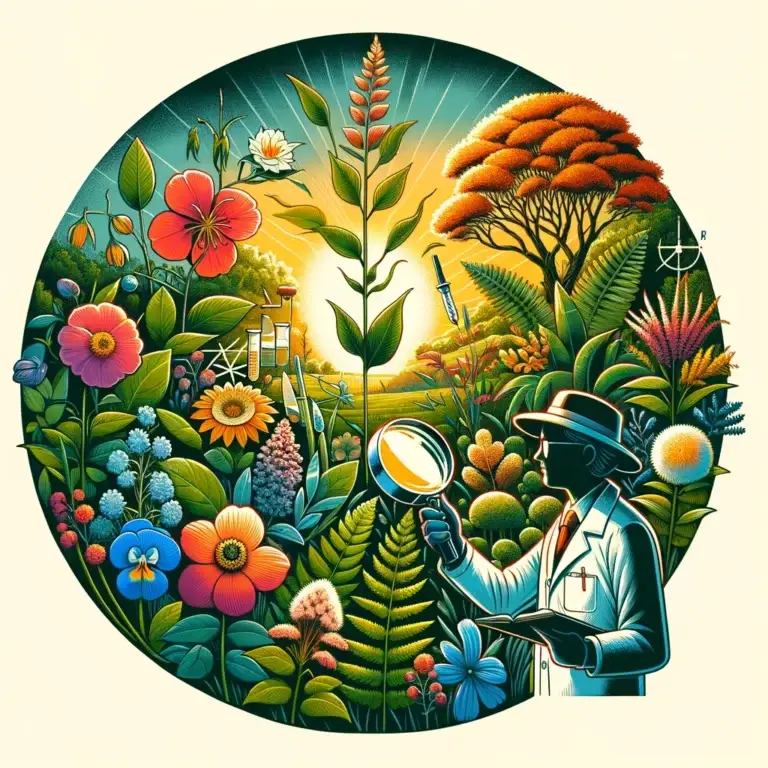Botany

Table of Contents
What is Botany?
Botany is the scientific study of plants, encompassing a wide range of topics related to plant life, including their structure, growth, reproduction, metabolism, classification, evolution, ecology, and interactions with other organisms and the environment.
Botanists, or plant scientists, explore plant species’ diversity, physiological processes, and role in ecosystems.
Various Aspects of Botany
Plant Anatomy
Plant anatomy focuses on the internal structure of plants, encompassing the study of tissues, cells, and organs. It involves examining how plant cells are organized into structures such as roots, stems, leaves, and reproductive organs like flowers and seeds.
By understanding the anatomy of a plant, scientists can explore how these different parts function and contribute to the plant’s overall growth, development, and survival.
Plant Morphology
Plant morphology focuses on the external form and structure of plants. It examines plant size, shape, color, and the specific arrangement of various plant parts, such as leaves, flowers, and branches. This study also delves into how genetic and environmental factors influence these features and how they adapt over time to suit different environments.
By analyzing these external characteristics, researchers can classify and understand the evolutionary relationships between plant species and their functional adaptations to various ecological niches. This knowledge is essential for fields like botany, ecology, and horticulture, aiding in the identification and cultivation of plants.
Plant Physiology
Plant physiology is the branch of biology investigating the physiological processes occurring within plants. This includes understanding how plants carry out essential functions like photosynthesis, respiration, transpiration, and nutrient uptake.
The study delves into the mechanisms of these processes at the cellular and molecular levels, examining how plants convert light into energy, absorb and transport water and nutrients, and exchange gases with the environment.
Plant Taxonomy
Plant taxonomy is the scientific discipline concerned with the identification, classification, and naming of plant species. Taxonomists, the scientists who specialize in this field, categorize plants based on their shared characteristics and evolutionary relationships. This involves a detailed analysis of plant features, such as their physical structure, genetic makeup, and reproductive methods.
By studying these traits, taxonomists develop a systematic classification scheme that groups plants into categories like species, genera, families, orders, and higher taxonomic levels. This system helps to organize our understanding of plant diversity and evolutionary history, facilitating communication and research in botany, ecology, and conservation.
Plant Ecology
Plant ecology studies the interactions between plants and their environments, focusing on how plants adapt to and influence their habitats. This field examines plant communities and how individual species respond to climate, soil conditions, and interactions with other organisms.
Plant ecologists investigate how plants adapt to specific habitats, their strategies for survival and reproduction, and their competition for resources such as light, water, and nutrients.
Additionally, the role of plants in ecosystems is a key area of study, including their contribution to energy flow and nutrient cycling, as well as their impact on and response to environmental changes. Understanding these dynamics helps manage natural resources, conserve biodiversity, and address environmental challenges.
Related Links
Chloroplast
Photosynthesis
Cambium
Xylem